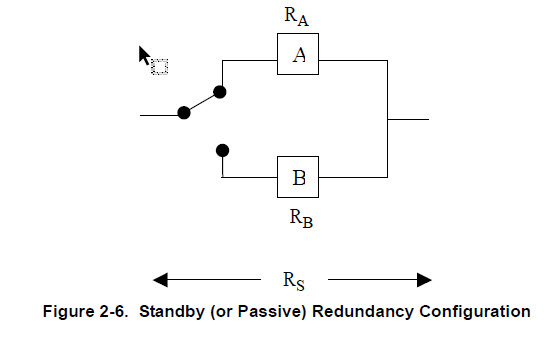Standby (or Passive) Redundancy Group
The simplest case of a standby redundant group is shown in Figure 2-6. It comprises one active item that performs the system function and one passive item that becomes active to perform the system function if the first item fails.

The following are assumed:
• The active failure rate of B only applies when A has failed.
• Any switching device to bring B into use is failure-free.
• The passive failure rate of B is zero.
• Failure rates are constant.
Then, during a time interval, , three possible outcomes exist:
• A survives for time → System functions.
• A survives for time and B survives for time →System functions.
• Both A and B fail before → System fails.
Although not derived here, it can be shown that, in this case, the system reliability, RS, is given by the expression:

Where:
λΑ is the active failure rate of A.
λB is the active failure rate of B.
It can also be shown that if A and B are identical items:
λΑ= λΒ = λ
Then:

Although the system reliability can still be calculated, where the redundancy is more complex and blocks appear more than once in an RBD, the use of Bayes theorem is required. This is considered further in Bayes Theorem.